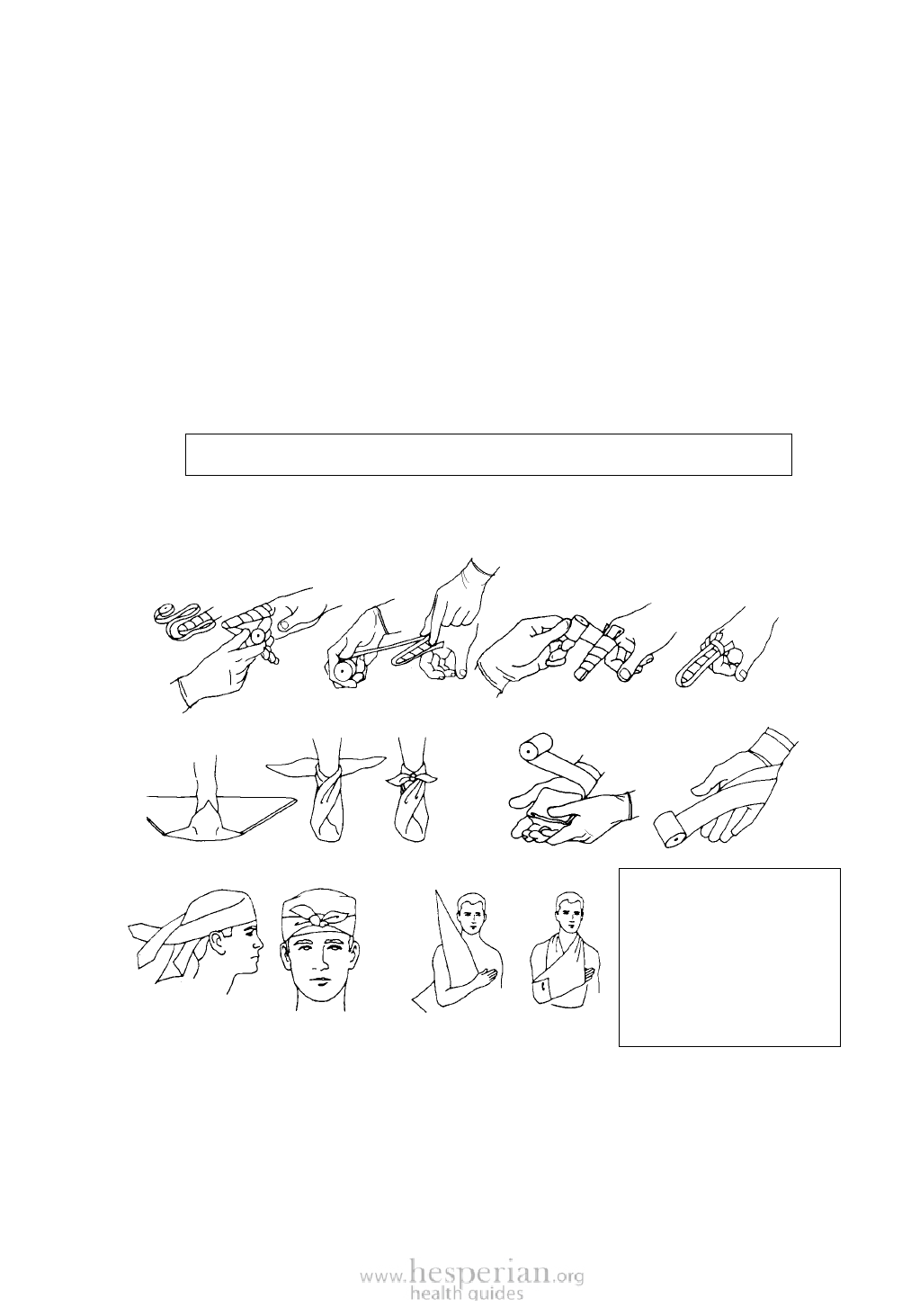
Where There Is No Doctor 2011 87
BANDAGES
Bandages are used to help keep wounds clean. For this reason, bandages or
pieces of cloth used to cover wounds must always be clean themselves. Cloth used
for bandages should be washed and then dried with an iron or in the sun, in a clean,
dust free place.
Make sure the wound has first been cleaned, as shown on p. 84. If possible,
cover the wound with a sterile gauze pad before bandaging. These pads are often
sold in sealed envelopes in pharmacies.
Or prepare your own sterile gauze or cloth. Wrap it in thick paper, seal it with
tape, and bake it for 20 minutes in an oven. Putting a pan of water in the oven under
the cloth will keep it from charring.
If a bandage gets wet or dirt gets under it, take the bandage off, wash the cut
again, and put on a clean bandage. Change the bandage every day.
It is better to have no bandage at all than one that is dirty or wet.
Examples of bandages:
Note: For children
it is often better to
bandage the whole
hand or foot instead
of one finger or toe.
The bandage will not
come off as easily.
CAUTION: Be careful that a bandage that goes around a limb is not so tight it cuts
off the flow of blood.
Many small scrapes and cuts do not need bandages. They heal best if washed
with soap and water and left open to the air. The most important thing is to keep
them clean.